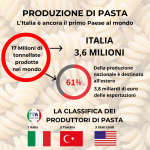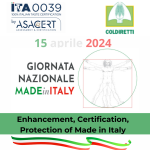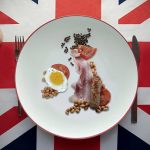From extra virgin olive oil to Parmigiano Reggiano, from Prosciutto di Parma to Gorgonzola and salami from Varzi: these are just some of the Made in Italy products rejected by the color label that is advancing in Europe, better known as Nutri-score.
Before talking about the long-standing diatribe between Nutri-score and NutrInform, a premise is necessary: as part of the “Farm to Fork Strategy”, a program designed to lead to a healthier and more sustainable food system, the European Commission has proposed to include a mandatory nutritional labelling system, standardized at EU level, which should be adopted by the end of 2022.
The first to propose a solution was France, in November, with the Nutri-score label. Inspired by a traffic light, the label assigns a color, from green to red, to foods based on the level of sugars, fats and salt per 100 g of product. A true “let pass”.
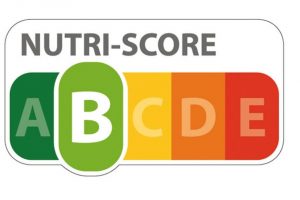
Immediately adopted by Belgium and then by Germany, the label must, however, deal with the Italian proposal: the NutrInform.
Italy claims that the traffic light label penalizes the Mediterranean diet and, in general, Made in Italy products. Italians have proposed the Nutriform Battery alternative. This new system evaluates the impact of food on the diet, instead of the single produce. Conceived as a battery, this label indicates the values of one portion of food, showing its amount of energy, fats, saturated fats, sugars and salt added to each meal. The principle on which NutrInform is based is what differentiates it fundamentally from Nutri-score: while the latter is not based on any scientific principle, but simply on nutritional profiles and unrecognized algorithms, the Italian one is based on scientific literature that excludes the existence of “good” or “bad” foods and recognizes the existence of balanced diets and not. Every product, therefore, can be part of a diet as long as it is considered in its right measure, taking into account the multiple needs of people. A very different modus operandi compared to the overall judgment of Nutri-score, which does not allow the consumer to understand how many sugars, salts or fats a food contains.
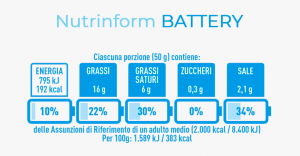
The matter is important, especially for the economic consequences on Italy’s exports, which pushed our country – supported by the Czech Republic, Cyprus, Greece, Hungary, Romania and Latvia – to move against a proposal that, if approved at European level, would reject almost 85% in value of Made in Italy (Coldiretti data).
For ITA0039, it is essential to protect Italian excellences such as Parmigiano, Prosciutto di Parma, San Daniele and extra-virgin olive oil that, according to the French label, would receive the orange or even red light. The one against France, therefore, is not only a commercial battle, but also keeps in mind the effects on consumers’ health.
«Nutri-score is harmful and uneducative. Without a doubt, Italian exports are at risk by this labelling, but supporting NutrInform is not just an economic issue for ITA0039. Italy is the country of the Mediterranean Diet, recognized by UNESCO as “intangible heritage of humanity”, and the best and healthiest diet in the world: the health of citizens for our country has always been a priority», said Fabrizio Capaccioli, creator of the ITA0039 Protocol.
The timing is relatively tight: there is time until December 2022 to find a solution to the issue of labelling. In this “crusade”, ITA0039 confirms itself on the side of Made in Italy, to protect the Italian food chain and ensure the healthiness of the products brought to the table. However, there is still a long way to go and many are the expectations of the sector.


